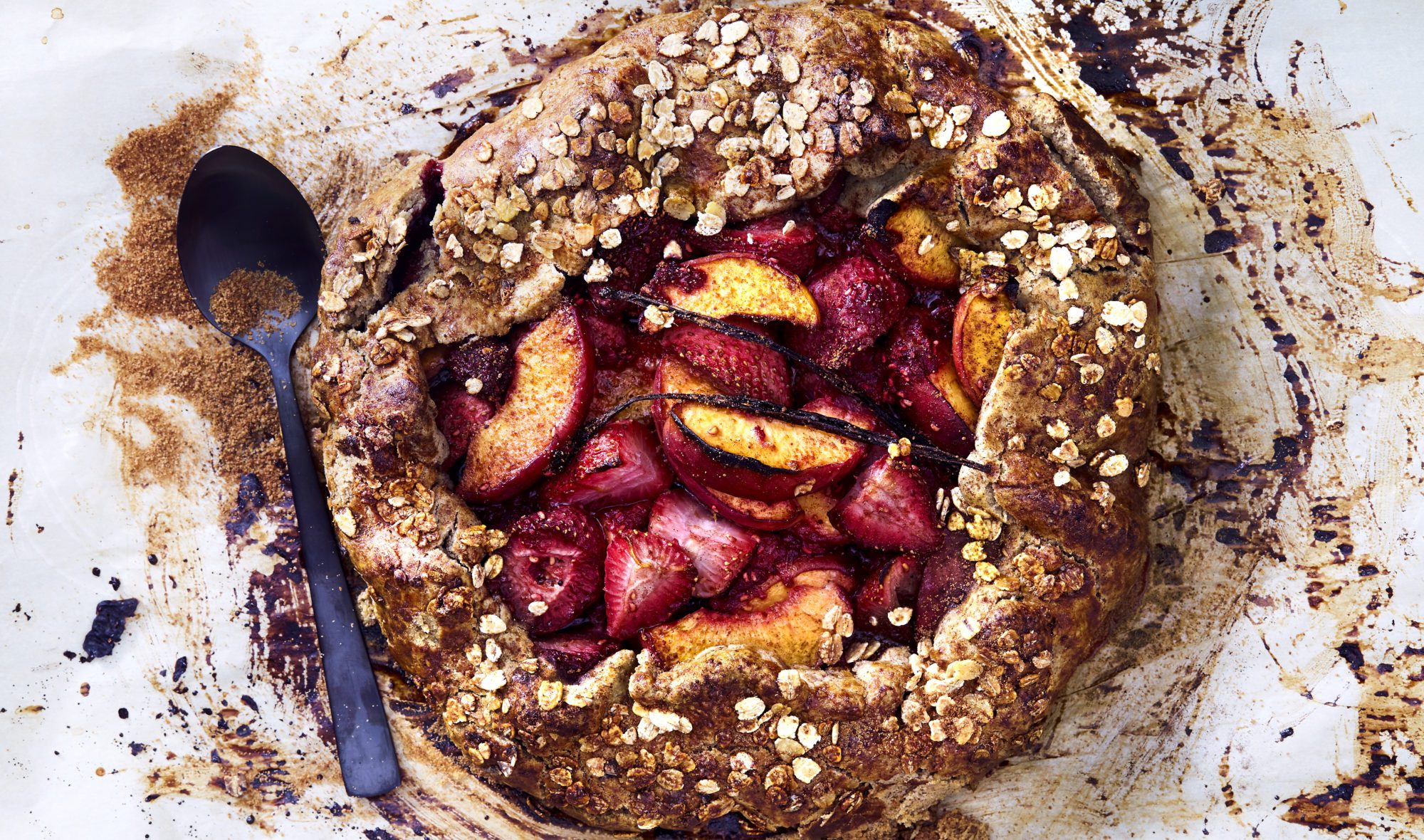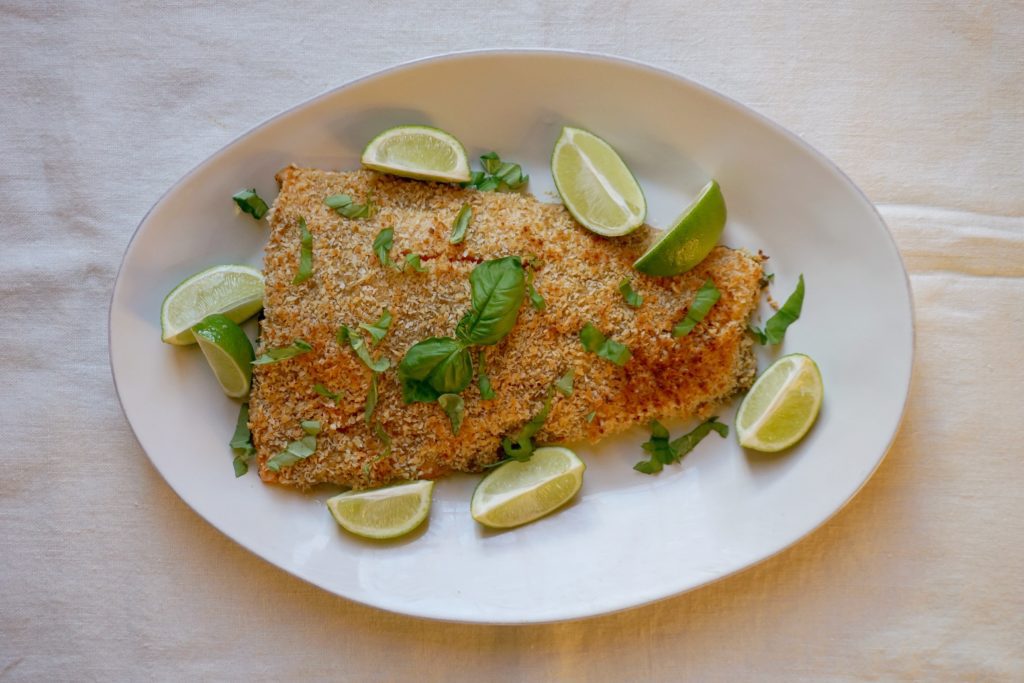
Coconut sugar is the concentrated sugar obtained from coconut palm sap. Through a series of steps, mild tasting coconut nectar tapped from coconut blossoms is heated, concentrated, and then eventually turned into a rich, incredibly sweet crystallized sugar. In flavor and appearance, coconut sugar is very similar to brown sugar, with its caramel color and taste, and slightly packable, sandy texture. Although often marketed as a “healthy sugar”, coconut sugar is still sugar. In terms of sugar content, it is identical to white sugar, although it has the benefit of some naturally occurring minerals and amino acids. However, in the amounts typically consumed, coconut sugar is not a significant source of any nutrient except carbohydrate (in the form of sugar).
Coconut sugar, as its name suggests, is sugar obtained from coconut plants. Rather than from the coconut itself, coconut sugar is actually sourced from coconut palm blossoms, which, if left to mature, would eventually turn into coconuts.
Just like beets and maple trees, you wouldn’t think to get a concentrated sugar just from looking at the coconut palm. But, through the magic of alchemy, the towering palm can eventually yield a rich-tasting, sugary, caramel-colored powder.
This is done through a series of steps:
First, coconut blossoms, while still on the palm, are gathered, bound, and cut at the tip. From this tip, a mild-tasting sap begins to drip out, which is directed into a collecting container. This sap is then heated, much like in the production of maple syrup, in order to evaporate the water content and concentrate the sugars. The result of this step is a thick, sugar-rich syrup. At this point, it may be packaged and sold as a syrup, or further reduced to transform it to crystals.
Just like with many other alternatives to white sugar (such as honey, maple syrup, or agave syrup), there is a lot of debate over whether coconut sugar is a “healthier sugar”.
Here are the facts:
Coconut sugar is a very energy dense food, and make no mistake, it is still sugar. Teaspoon to teaspoon, the sugar content of coconut sugar versus regular sugar is identical. However, because it is less processed, coconut sugar contains small amounts of naturally-occurring minerals and amino acids, which makes it slightly more nutritious than white sugar.
The world’s largest producers of coconut products are Indonesia and the Philippines, where coconut sugar has been used as a sweetener for thousands of years.
Coconut sugar generally comes as a granular, caramel-colored powder which looks nearly identical to brown sugar.
Upon ingestion, its crystals will melt quickly on the tongue, releasing an incredibly sweet, rich flavor, with notes of caramel and iron, with only the most discerning palates being able to detect the faintest whisper of coconut.
One teaspoon of coconut sugar (about 4g) has 16 calories and 4g of carbohydrates, all of which come from sugar (therefore one teaspoon contains 4g of sugar). In the amounts typically consumed, coconut sugar is not a significant source of any other macronutrient or micronutrient.
Coconut sugar is typically only found in health food stores but also may appear in larger, more progressive grocery stores.
When choosing coconut sugar, read the ingredients and look for packages that contain only coconut sugar. Sometimes coconut sugar is referred to as coconut palm sugar, or coconut sap sugar.
Please note that like brown sugar, coconut sugar has a tendency to clump and harden. A certain degree of this effect may occur on the shelves, but if it is rock solid and does not break up easily, it may be a sign that it has been stored improperly, or has been sitting on the shelf too long.
Coconut sugar is very shelf-stable and will almost never go bad. However, if stored improperly where moisture is allowed to enter the package, it will harden and become difficult to use. Therefore, store coconut sugar in a cool, dry area in an airtight container.
Coconut sugar doesn’t need any special preparation to be eaten, although it is rarely eaten by itself as food. Instead, it is often added as a sweetener in baked goods, or simply used in place of white sugar in your morning cup of joe.

This coconut crusted salmon is tangy, slightly sweet, and infused with aromatic Thai spices. Serve with your choices of vegetables and sides, and you’ll have an impressive meal for family or guests.
Prep Time: 10 minutes Cook Time: 12 minutes Yield: 4-6 servings
Preheat the oven to 350 degrees Fahrenheit. Line a baking tray with parchment paper and place your salmon on it, skin side down.
In a small bowl, add 1 tbsp of whisked egg, coconut sugar, lime juice, curry paste, and salt, and whisk together until smooth. Spoon this mixture over the top of the salmon, and rub it in, covering the entire surface area, either with the back of the spoon or with clean hands.
Sprinkle shredded coconut over the salmon in an even layer, making sure to cover the entire surface area.
Once the oven is preheated, place the salmon in the oven, and bake for 7-10 minutes, depending on the thickness of the filet. Salmon is done when the flesh pulls apart easily when a knife is inserted into the thickest point, but it still has a bit of pink translucency in the center.
Transfer the salmon to a serving dish, and garnish the plate with fresh lime wedges and coarsely chopped fresh basil.
This recipe is delicious served hot with your choice of side dishes or served cold as part of a salad.
Precision Nutrition’s Encyclopedia of Food expands every single month as we highlight new foods and showcase beautiful food photography. If you’d like to stay up to date, simply click this link. From there, we’ll send you a FREE copy of our recipe book. We’ll also let you know when new and delicious foods are added to the site.
Coconut sugar is the concentrated sugar obtained from coconut palm sap. Through a series of steps, mild tasting coconut nectar tapped from coconut blossoms is heated, concentrated, and then eventually turned into a rich, incredibly sweet crystallized sugar. In flavor and appearance, coconut sugar is very similar to brown sugar, with its caramel color and taste, and slightly packable, sandy texture. Although often marketed as a “healthy sugar”, coconut sugar is still sugar. In terms of sugar content, it is identical to white sugar, although it has the benefit of some naturally occurring minerals and amino acids. However, in the amounts typically consumed, coconut sugar is not a significant source of any nutrient except carbohydrate (in the form of sugar).